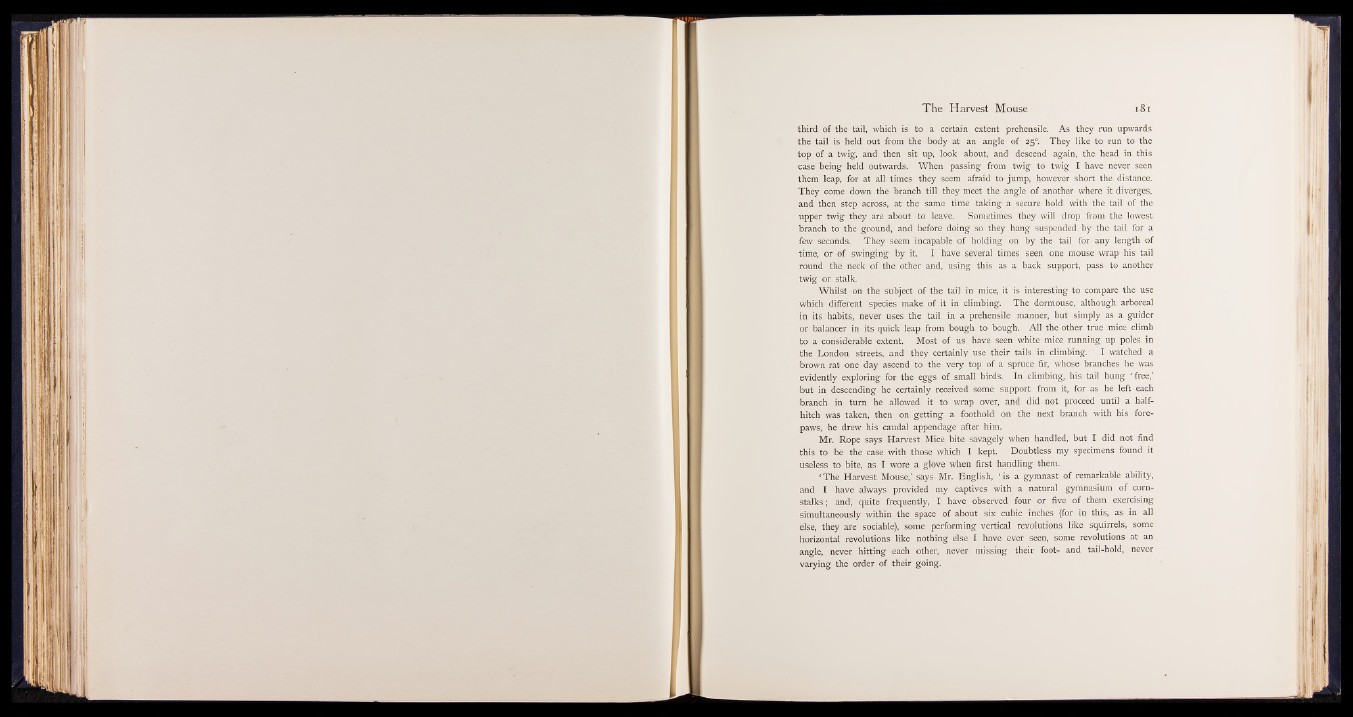
third of the tail, which is to a certain extent prehensile. As they run upwards
the tail is held out from the body at an angle of 250. They like to run to the
top of a twig, and then sit up, look about, and descend again, the head in this
case being held outwards. When passing from twig to twig I have never seen
them leap, for at all times they seem afraid to jump, however short the distance.
They come down the branch till they meet the angle of another where it diverges,
and then step across, at the same time taking a secure hold with the tail of the
upper twig they are about to leave. Sometimes they will drop from the lowest
branch to the ground, and before doing so they hang suspended by the tail for a
few seconds. They seem incapable of holding on by the tail for any length of
time, or of swinging by it. I have several times seen one mouse wrap his tail
round the neck of the other and, using this as a back support, pass to another
twig or stalk.
Whilst on the subject of the tail in mice, it is interesting to compare the use
which different species make of it in climbing. The dormouse, although arboreal
in its habits, never uses the tail in a prehensile manner, but simply as a guider
or balancer in its quick leap from bough to bough. All the other true mice climb
to a considerable extent. Most of us have seen white mice running up poles in
the London streets, and they certainly use their tails in climbing. I watched a
brown rat one day ascend to the very top of a spruce fir, whose branches he was
evidently exploring for the eggs of small birds. In climbing, his tail hung ‘ free,’
but in descending he certainly received some support from it, for as he left each
branch in turn he allowed it to wrap over, and did not proceed until a halfhitch
was taken, then on getting a foothold on the next branch with his forepaws,
he drew his caudal appendage after him.
Mr. Rope says Harvest Mice bite savagely when handled, but I did not find
this to be the case with those which I kept. Doubtless my specimens found it
useless to bite, as I wore a glove when first handling them.
‘ The Harvest Mouse,’ says Mr. English, ‘ is a gymnast of remarkable ability,
and I have always provided my captives with a natural gymnasium of cornstalks
; and, quite frequently, I have observed four or five of them exercising
simultaneously within the space of about six cubic inches (for in this, as in all
else, they are sociable), some performing vertical revolutions like squirrels, some
horizontal revolutions like nothing else I have ever seen, some revolutions at an
angle, never hitting each other, never missing their foot- and tail-hold, never
varying the order of their going.